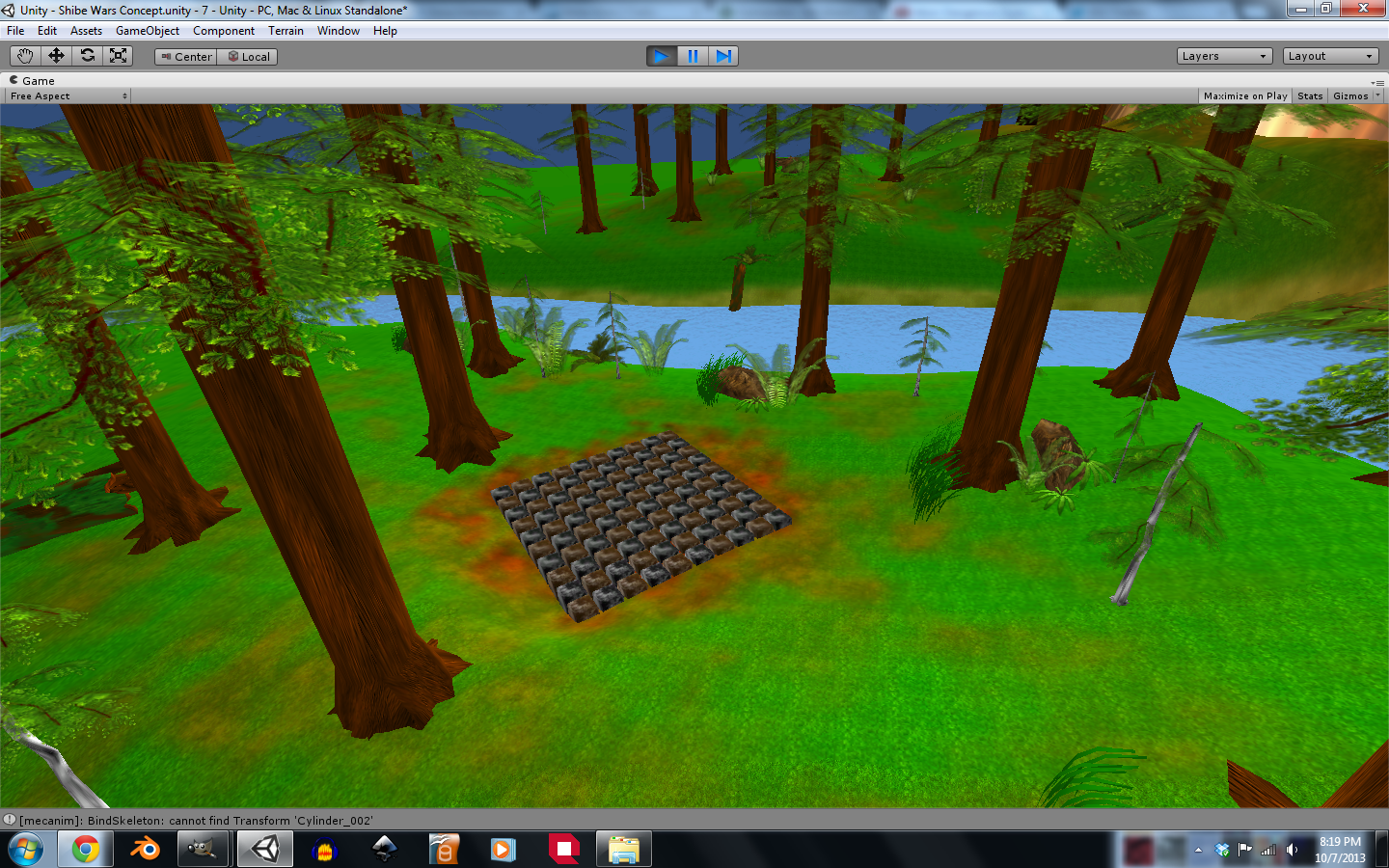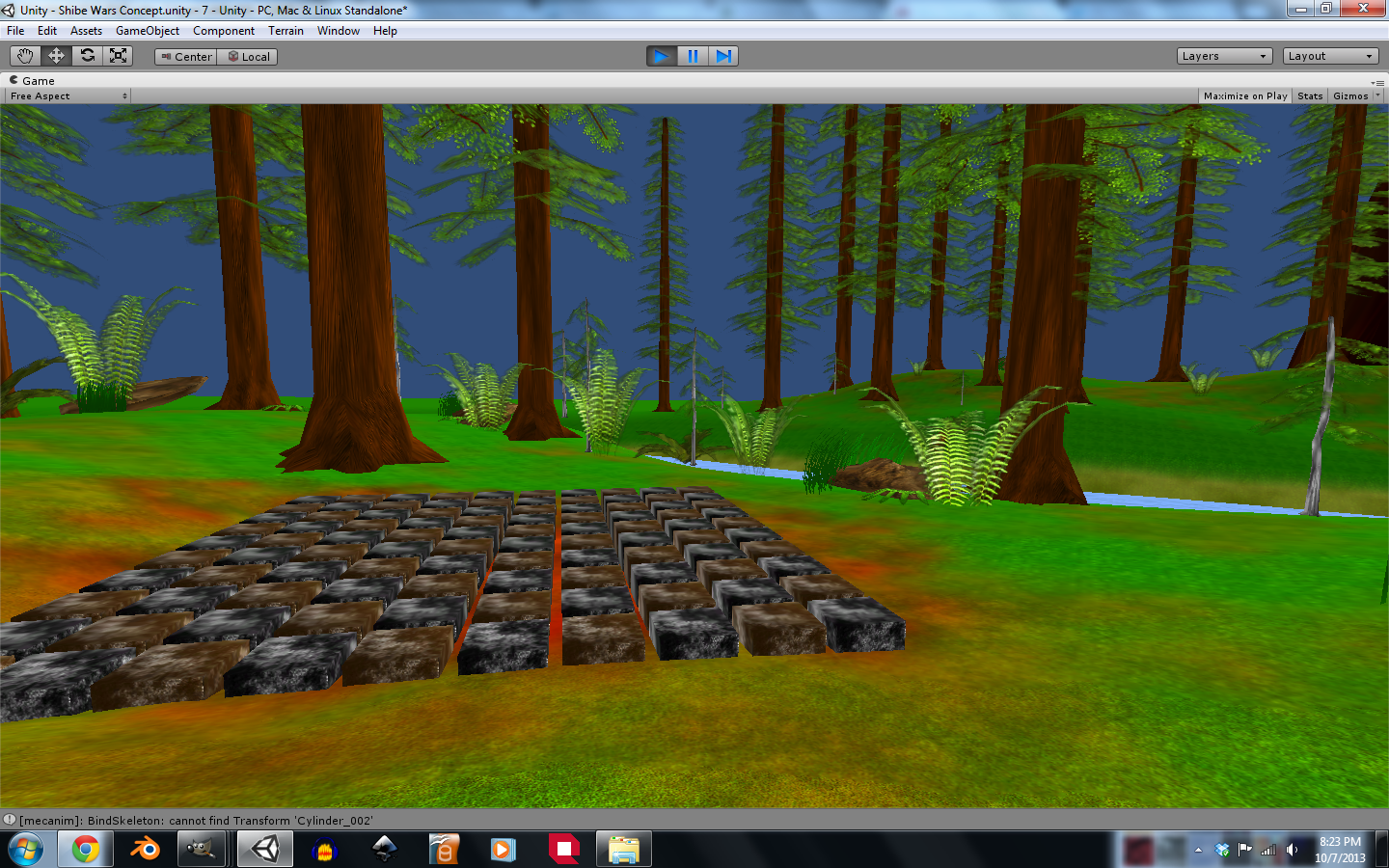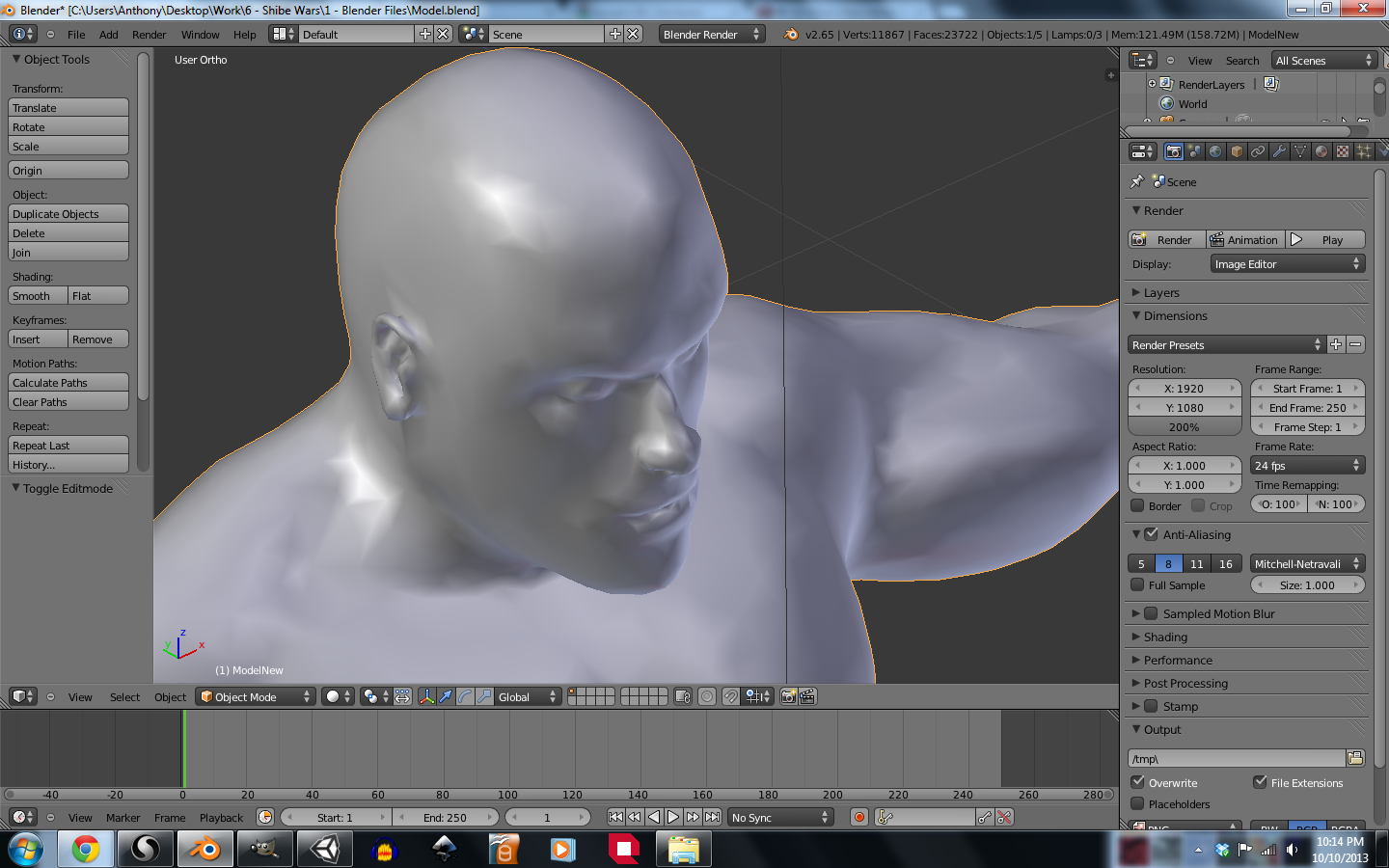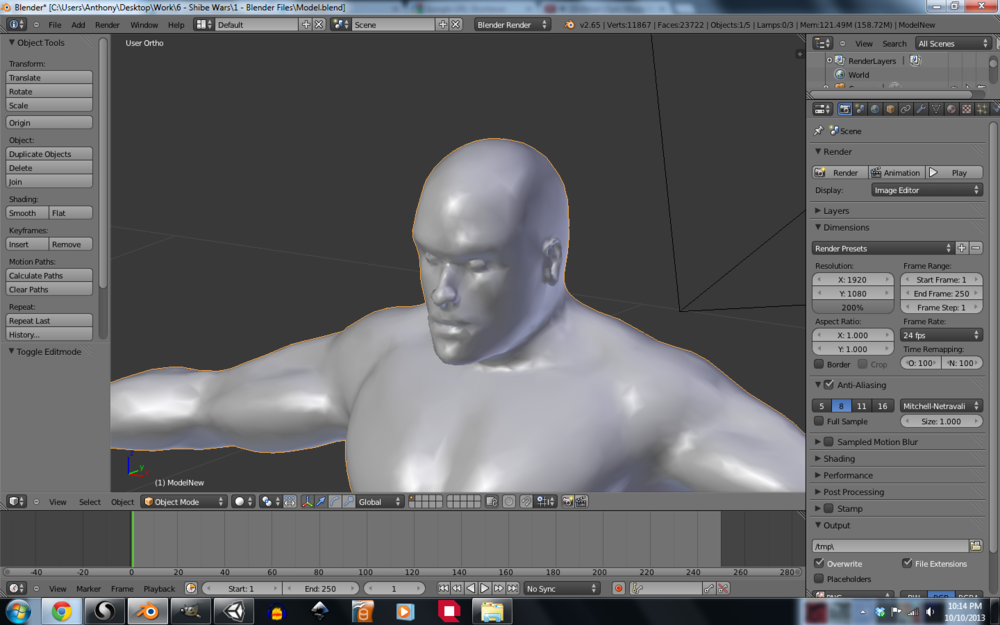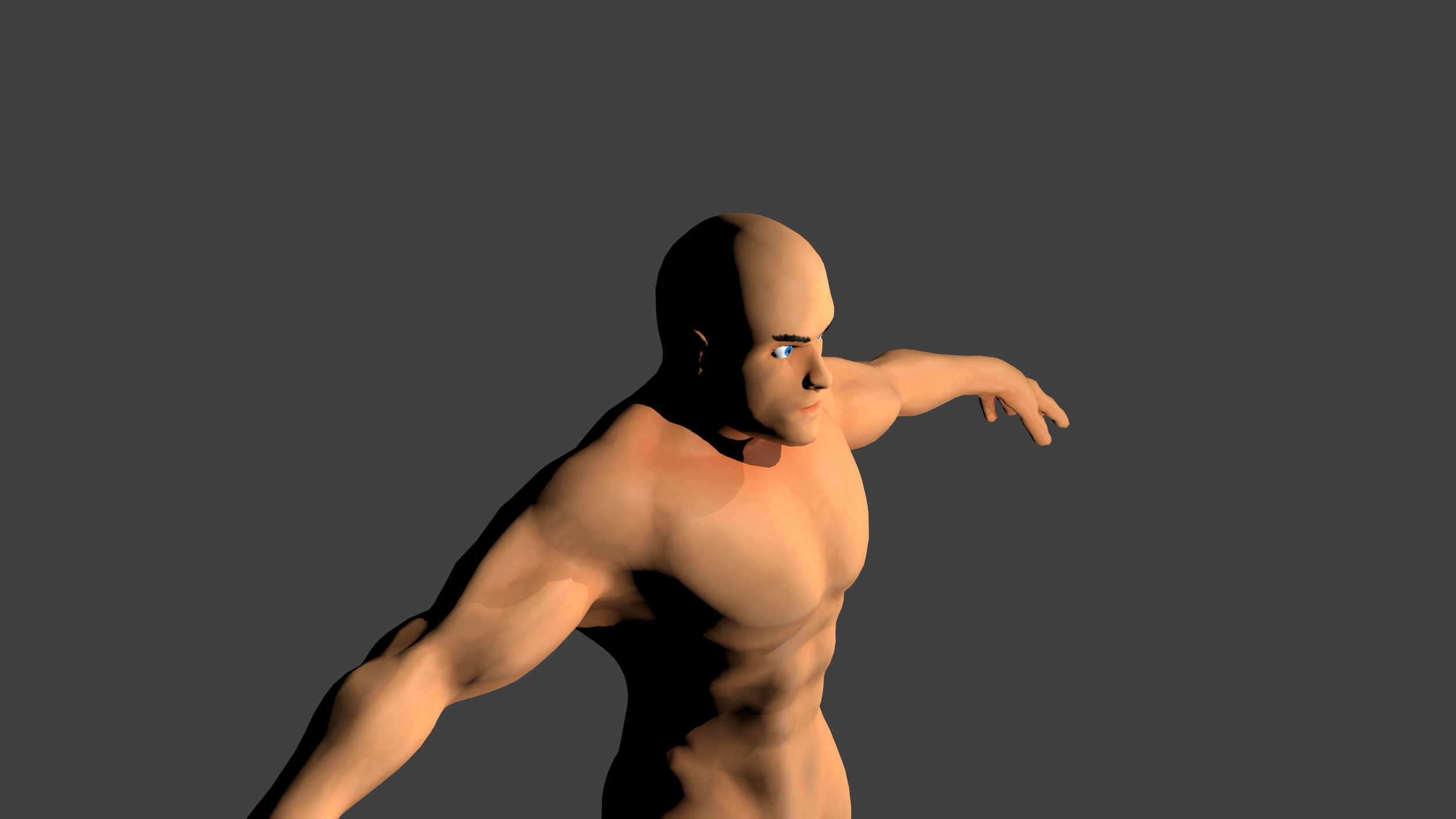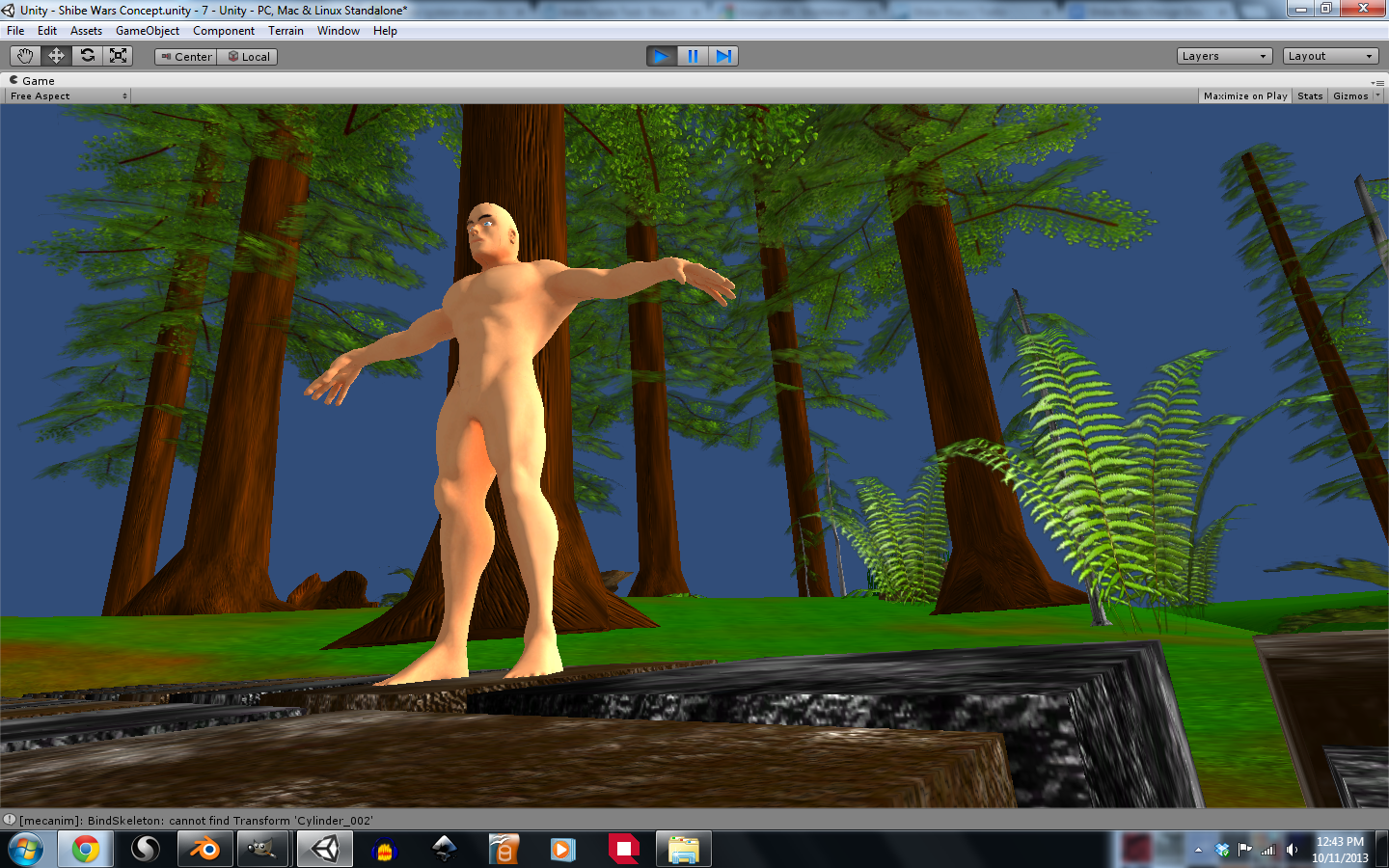It's been a very long week these past seven days, but ironically a very short month since we began development on Shibe Warz. I realized since my last blog post that I'd like to add a little more insight into Verus' unique history/development routine, as well as insight into my own thought and work process. Even if nobody really reads this, I can still have it for chronicling of my future endeavors.
We've come a long way in three years. I first moved to Philadelphia from Los Angeles in early 2010 after making tentative plans, over the phone, to develop video games with my brother Nicholas. Even then we had absolutely no idea what we were doing. But we had ambition. Lots of ambition. We've played video games all our lives, including an absolute boatload of 2-player co-operative games (of which there are relatively few today), and we wanted to bring our own stamp to the industry even if only in some small way. We instantly began doing what all amateur and aspiring game designers, who know nothing, do: began designing an MMO, i.e. the largest and most difficult project in the industry.
MMO's require giant studios, years of time, decades of research, bathtubs of money, and basically everything else that our rookie two-man group lacked. As a matter of fact, we weren't even rookies. At least a rookie is working the field after some training. We were hot out of our childish lives with absolutely 0% of our lifetime devoted to game design. We'd only ever *played* games. Sure, we paid attention to them and what made them fun for us, and talked naively about the "designs" of a lot of those games, but never had we even downloaded any of software necessary to *make* one. Before moving to Philadelphia I'd never even *looked* at an online rendering of something made in Blender, the freeware 3D modeling program that I would come to depend upon for literally all of my work today. Now Blender is the third program in my workflow when I'm developing character models, but first in line when modeling everything else.
But now I'm getting ahead of myself. Back in 2010 Nick and myself began with a pencil and a notebook and attempted to begin design work on our massively multiplayer online role playing game without having any experience in game design. We covered a lot of bases, we believed, including all manner of gameplay mechanics for each character "class," what we would and would not include in the world, all the way down to the individual rivers and tributaries on our game's world map. But only a few weeks into designing it began to unravel because, as we quickly discovered, we knew absolutely nothing about implementation. Between our designs and a finished product there was a great, yawning chasm of darkness and oblivion which required a bridge we knew not how to build.
And so we scrapped that idea.
For the next few months we were both disillusioned with the notion of developing video games. I fell into a day job in the city of Philadelphia while Nicholas (a few years my junior) worked on completing his bachelor's degree at Drexel University. In this interim we both, separately, began attempting to build a semblance of a bridge over that mammoth void between idea and product. I started earnest work in learning 3D modeling with Blender and eventually applied my very amateur ability toward a completed "Verus Entertainment" intro video, which can be seen here:
http://www.youtube.com/watch?v=_ONxaTgIUoc
At the same time, Nicholas was starting to branch slightly away from his original college major by enrolling in Game Design courses (without branching too much that it would hurt his credit accumulation) and working on projects with his peers, gaining some valuable preliminary knowledge.
A few months later, while still gaining some ground within our respective "specialties" (Nicholas with coding and myself with art), we decided to try our collective hand at a 3D tower defense game. I developed quite a few assets for this project, but even still we had no idea what we were doing. I knew nothing about rigging, skinning, or even the absolute most essential piece of 3D development, UV wrapping (although it can be argued validly that *all of these* are essential pieces). My understanding of something even as simple as texturing was reduced and chained to the default layered textures that Blender could produce for me. This is, of course, useless without UV wrapping and texturing. And texturing is useless without rigging and skinning the model in order for it to animate within a game engine.
I knew nothing, but thought I was doing well. In reality I had merely cracked the door ajar. I didn't even know how badly I was struggling to open that door further, because I thought it was enough to slip through. It would become clear to me later, much later unfortunately, how wrong I had been.
At this point I do realize how many questions are most likely whizzing around inside of your head, or even questions that you're screaming aloud at your monitor. "HOW DIDN'T YOU KNOW ABOUT UV WRAPPING," or "WHY DIDN'T YOU SEARCH YOUTUBE FOR TUTORIALS ON THIS??!" And now I absolutely agree with you.
But back then I was walking completely blind. The only thing I knew, with any certainty, was that I wanted to make video games. Actually, to be more clear, what I knew was that I *needed* to make video games. Nicholas and I both attested to this, time and again, over the course of several months of struggling to get anything resembling a game off-the-ground. We could not, and I was so ignorant of what was required of video game artistry, both technical and creative, that I didn't even know what to search for. I was so ignorant I didn't know I *should have* been searching for any answers to questions that I did not yet have.
And so, with a few dozen useless assets along with a fully modeled (and blandly textured) Home City for a hypothetical 3D tower defense game, we again fell into non-productivity. We shelved the idea "for good" as we became disillusioned, once again, in developing video games. We simply knew too little, understood even less, about what it takes to make games.
I personally suspect that this is probably the point at which most people would give up pursuing a certain avenue, no matter what the subject matter is. An aspiring architect, a young biology major, an artist in his late teens or early twenties. Encountering such personal failure after several months of hard "work," even naive and undeveloped hard work, exacts a toll on the unlearned. I do not have a history of art composition in any form, whether material canvas or CGI. I do not carry a degree in the arts. I have not used Blender, or any 3D modeling software, for even a moment of my 29 years before the year 2010. And here I was (here *we* were) with two massive projects built in our minds but failing to achieve any kind of traction. Failing completely. I knew nothing but wanted everything.
What am I doing? What *was* I doing?
After the 3D tower defense game, we gave up for a year. During that time Nicholas utilized his time spent in one of his Design courses to gather a few of his peers into a small group of aspiring game designers. We arranged a scant few meetings over the course of several weeks, about six to eight of us gathering together to discuss certain aspects of game design but in no certain terms and with really no actual experience to speak of. As it turns out today, even the game design courses that Nicholas and the others had taken were no match for *actual* game development. After a few weeks, and perhaps a total of three meetings amongst ourselves, our hodgepodge group faded into nothing and we were left with nothing in our hands.
The year finally passed, I had been working in the restaurant industry for about half a decade by this point and was inundated with its demanding schedule. In early 2012, Nicholas approached me again with a renewed offer of starting developing (again) on our original idea for an MMO. Although it was doomed to failure due to the very nature of development, and although we still did not understand this, something magical happened as we relit the torch: we began to research.
Oh my... god, that's it. We did not know the questions to ask, but we both knew that we needed to ask questions. We needed to begin probing the fabric of game design, and this included, quintessentially, all of the technical aspects. I learned about ZBrush. Mudbox. UV wrapping. Rigging and skinning. Texturing. I had never before heard of these aspects of technical artistic digitization. And now I was surrounded with these terms. I had creaked the door ajar a few more inches and could finally see the darkness indicative of the depths that stretched down before me. For the first time not only could I see the horizon, but I had spotted something disappear beyond the vanishing point, and realized that more lay beyond it. I was loaded with information. I was not privy to my brother's personal growth in his own realm, but I knew that he had researched game engines and fundamental coding techniques.
And then we stopped working on our MMO. Not because it faded away like before. But because we deliberately halted our own progress due to the overwhelming knowledge that assailed us from every corner of the internet tutorials. We began to sense ourselves in this "place." And this place was far too large for us, and we far too small.
We halted this progress on the MMO after about 2 months of "pre-development" and spent a few months reeling from the shellshock. Eventually my Zbrush demo ran out after 30 days of running it through its paces, and I took what I learned from there and applied it to my endeavors in Blender with much better results than ever before. While Nick was very busy taking time to complete his final semester at Drexel (incorporating a rather demanding schedule up until the very end that summer) I was busy attempting to learn how to UV wrap and make textures, however poorly designed and executed all of this was.
While Nick was busy with school, and in between my increasingly spotty study of art development, I read about my passions in my off-time (mainly scientific works, astrophysics, philosophy and literature) and delved into physics as a back-up plan to our game design dreams failing. Nicholas helped me through all of this, and although this is a rather strange tangent, he was, and has always been, the other half of my strength and ability through these past three and a half years. And for that year in particular, 2012, I thank him endlessly for helping to show me what I can accomplish.
Some more time had gone by as we sped through the remainder of 2012 without working on anything game-related. Both Nicholas and myself had to move out of our respective apartments and into new ones, set up new lives in different corners of the city, re-align to new day-jobs, and many other nuances. But by January of this year, 2013, we were both very much ready to approach game design and development with a new pair of lives. It was Nicholas who approached me first with the idea of starting small, on a very, very small project for the month of February just to get our feet wet. This is something that we should have done since the beginning, and not coincidentally something I had heard countless developers say in interviews on YouTube (including, most importantly, Ed McMillen and Tommy Refenes of Team Meat).
START SMALL. Your first game is going to be *incredibly disappointing*. It will probably be nearly unplayable. And our first game, Time Gem, was unplayable. It had basic movement and attacking functionality, but was horrible in every way that a video game can be horrible. Empty plot. No narrative. Horrible graphics that get no message across. Terrible GUI. It showed us, in no uncertain terms, what we actually, positively, do not know about game design. That project threw our ignorance directly in our faces.
But I have never been more proud of anything else I have done. You can find Time Gem on Games page of this website and take a look for yourself. It's awful. But I learned more in the two months we spent on that project than in the two previous years combined. Personal lessons about UV wrapping, texturing, rigging, animating, and asset creation were daunting but exceptionally rewarding. Seeing what you *don't know* is as important as knowing that you don't know. You need to know how ignorant you are. It is not enough to simply know that you're ignorant. You need to do research into what it takes so that you can have a working hypothetical model inside of your mind of spaces you need to fill with understanding.
After Time Gem I began spending weeks' worth of free time at the local Barnes N Noble on Walnut in downtown Philadelphia, sitting in the Starbucks, sipping on Chai Lattes and scouring dozens of graphics design magazines for hours at a time. Reading on latest tips, both technical and abstract. Getting inside the work on the pages. Without a technical background or intimate knowledge of the 3D modeling tools used to create those works (or works of my own) it is impossible to be that creative. I first needed, and still need, to master the technical aspects of Blender, Sculptris, MakeHuman, GIMP/Photoshop, and Unity 3D. But that time spent examining composition after composition, reading interview after interview, witnessing creative tutorial after tutorial, was invaluable to my understanding and building of my own personal future goals and aspirations within Verus Games. It instilled within me my own boundaries and horizons of creative expression and is helping me every day to develop new artwork and vistas that allow me to pour myself onto the screen. I am barely through the door, but I have an idea of where I want the darkness to lead. And that is a powerful thing.
And now here I am. Here we are. I still suck, and I know that. But I can honestly say I know *why* I suck. I no longer feel powerless against my own ignorance, but rather I strive every day to be better than yesterday. And the more I understand about my technical limitations, about how to use the tools of my own expression, the more that ignorance fades away into the grey of the past three years. And this leaves me more confident in myself than I've ever been. The ability to look back on the projects we've accomplished in the past, no matter how amateur, no matter how terrible, is equally as helpful in enabling both Nicholas and myself to focus on what we've done wrong and what we've done right, and in moving forward with even greater clarity.
I don't know how to end this. The story of my life shows how atrocious I am at ending anything satisfactorily, but I do want to narrow down what I've learned in order to pass on to you in case you are also struggling your own way through Independent Game Development:
Never give up. Keep moving forward. But don't do it blindly. Ask questions about your goal, your purpose, and then ask yourself what you need to achieve that goal. Then ask Google and YouTube, because they will have most of the technical answers you are looking for. And you need that technical information before you can hope to lay your creative imagination to the canvas of reality. You need to know your tools before you can use them effectively. Otherwise you're just slapping paint onto the wall.
With love to everyone, especially my family, biological and chosen.
~ Anthony.



